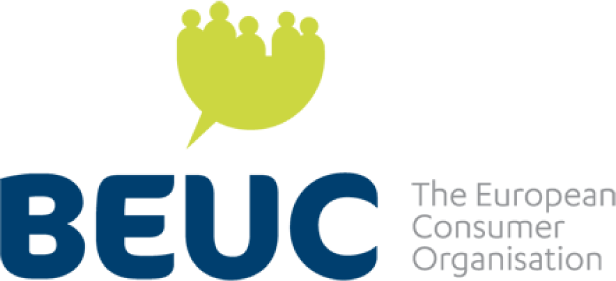Blog
Program Areas
-
The Internet as a whole has become an important part of our global public sphere. Internet provides access to a wealth of information and knowledge, and the possibility to participate, create and communicate. This public space made up of internet infrastructures is increasingly threatened from two sides; by the centralization and commercialization through the dominant positions held by giant telecom and Internet companies, as well as by an increasing trend in state regulation and censorship of the net. This poses important questions about how we choose to organize and regulate our digital societies, and how Internet governance models can be developed and implemented to ensure fair and democratic participation. When it comes to the future of the Internet, a key discussion is one of infrastructures; who owns, runs and controls them. The question of regulation, and who oversees the regulators, is made complicated by the transnational nature of the net. As much as people expect a broadly and equitably accessible Internet open to diversity, we are, slowly but surely, moving away from it. Monopolization of Internet infrastructures and services by companies such as Facebook and Google has gone hand in hand with privacy intrusions, surveillance and the unbounded use of personal data for commercial gain. As we all interact in these centralized commercial platforms that monetize our actions we see an effective enclosure and manipulation of our public spaces. Decentralization and democratization of the Internet infrastructure and activities is essential to keep a free, open and democratic Internet for all to enjoy equitably. But can the “small is beautiful”-idea be compatible with the building of state-of-the-art successful infrastructure in the future? The debates around net neutrality, infrastructure neutrality and Internet monopolies reflect the important choices that are to be made. It is essential the EU formulates a comprehensive vision on the internet that addresses the protection of civil liberties such as free speech and privacy, but also the growing commercialization of our digital public spaces and the commodification of personal data with the effect of the market encroaching on all aspects of our daily lives. Only then can it make relevant interventions regarding the Internet and its governance. Let´s discuss how to re-decentralize and reclaim the Internet for all. This conference (link is external) is organised in cooperation with Commons Network and Heinrich Böll Foundation. DRAFT PROGRAMME (TBC) 15:00-15:30 Introduction 15:30-16:45 1st panel, The big picture What, if anything, in the current model of Internet Governance is clashing with a decentralized, resilient internet viewed as a common good? And what steps should be made by policymakers to foster the best environment for decentralized, community managed projects to grow? Confirmed speakers: Renata Avila, Aral Balkan 16:45-17:00 Coffee break 17:00–18:15 Decentralised infrastructure: Examples what examples of local and decentralized projects do we have today and what are the obstacles they face? Confirmed speakers: Edmon Chung, Robbert Mica, Olivier Schulbaum 18:15–18:30 Conclusions and final remarks This conference will be live streamed at: http://greenmediabox.eu/en/live/ (link is external) http://greenmediabox.eu/en/live/>* (link is external) Background & Programme: http://www.greens-efa.eu/internet-as-a-commons-13850.html (link is external) Joint the event community on Facebook: https://www.facebook.com/events/939398269451418/ (link is external) https://www.facebook.com/events/939398269451418/> (link is external) Registration: http://www.greens-efa.eu/events/registrations/658-internet-as-a-commons.... (link is external)
-
Blog
My personal data, nobody's business but my own:
Key consumer demands for the trilogue on the General Data Protection Regulation
Summary: BEUC reiterates the urgent need to put consumers back in control over the way their personal data is processed online and hopes an agreement on the General Data Protection Regulation will be reached under the Luxembourg Presidency. However, the urgency to adopt the Regulation must not take its toll on consumers’ fundamental rights. Weak provisions on fundamental data protection principles (e.g. purpose limitation) and/or allowing too much flexibility for commercial entities to process personal data based on their alleged legitimate interests could have devastating effects for consumers’ privacy, especially if coupled with flawed rules on highly sensitive aspects like profiling. In general terms, we believe that the European Parliament’s first reading position provides a good basis for an agreement. We also welcome the proactive stance taken by the European Data Protection Supervisor, who has provided some useful recommendations. In contrast, the Council’s General Approach contains some provisions that would even weaken current protection standards, a clear red line set out in the beginning of this reform. That being said, we urge the Commission, the Parliament and the Council to be ambitious. The objective is to modernise and improve Europe’s data protection regime, not to merely maintain the status quo and certainly not to weaken existing protection. The outcome of these negotiations shall provide consumers with greater transparency and control over how their personal data is collected and used. Otherwise consumers will be left with little option than to systematically give up their privacy in order to access online goods and services. This would be unacceptable. A robust Data Protection Regulation must comprise: A broad and future-proof scope. Every company doing business in Europe or targeting users based in Europe must comply with EU laws, regardless of the company’s nationality or the place where it is established. Any kind of information that would allow to identify an individual or single someone out as an individual shall be considered personal data, including pseudonymous1 data. Solid data protection principles and strict legal grounds for data processing. Principles such as “purpose limitation” and “data minimisation” are at the core of the EU data protection regime and must not be weakened. The amount of personal data processed should be kept to the minimum necessary. Further processing of personal data for purposes incompatible with those that justified the initial processing should not be allowed. An enhanced set of data subjects’ rights. Strong and clear provisions are needed with regard to fundamental issues such as the information that must be provided to data subjects, profiling and the right to object. Restrictions on user rights should be strictly limited and include sufficient guarantees. A comprehensive enforcement scheme, including effective mechanisms for consumer redress. The Regulation must be effectively and uniformly enforced across all of the EU. It is crucial that consumers can easily access effective mechanisms to seek redress and that consumer organisations are allowed to proactively defend the rights of data subjects. [see attached for rest of this important document] -
Blog
MMA Global Smarties Awards Shortlist Celebrates Innovation and Effectiveness in Mobile Marketing
Campaigns from leading brand marketers and agencies compete from around the world to win the coveted Smarties
New York – August 20, 2015 –Honoring the trailblazers leveraging the power of mobile marketing, the Mobile Marketing Association (MMA) (link is external) today revealed the shortlist for the 2015 Global Smarties™ Awards. The close to 100 campaigns from far reaching countries around the world represent the next evolution of what is possible when brands place mobile at the core of their marketing strategies. Led by Chief Creative Officer of Razorfish Global, Daniel Bonner, the powerhouse jury (link is external) panel of over 25 leading brand marketers and agency professionals will have the difficult but invigorating task of debate and winner selection. “This year’s shortlist shows how creativity, innovation and analytics across all mobile formats continue to mature. It is clear that mobile has become an ever increasing primary route to engaging and reaching consumers in a powerful way,” said Bonner. “This diverse shortlist offers a unique perspective from around the planet.” “By continuing to honor the best and brightest work for innovation, creativity and bravery across mobile marketing, the MMA Global Smarties Awards Program serves as an inspiration and beacon for marketing and agency leaders to keep striving for even greater integration of mobile as a key competitive advantage,” said Sheryl Daija, Chief Strategy Officer, MMA. “We are seeing evermore progressive and unique approaches to using mobile as a way for marketers to connect more closely to their consumers.” The finalists and winners will be honored at the annual Global Smarties Awards show (link is external), hosted by Jason Jones, formerly of the Daily Show on the evening of day one of the MMA SM2 Innovation Summit (link is external) during Advertising Week in New York City. The 2015 show will be held on September 28, at Pier Sixty overlooking the Hudson River. As part of a larger ongoing strategy for the MMA to provide the most comprehensive resource for marketers on how best to implement effective mobile marketing campaigns, the MMA in collaboration with Millward Brown will be analyzing the shortlist and publishing a Global Trends Report, which will unearth best practices, key mobile trends and establish what sets apart a winning mobile campaign. Additionally, the MMA will be converting the shortlist into case studies to be added to the over 500 strong Case Study Hub (link is external). For the full list of awards, please visit http://bit.ly/1F9jZUz (link is external) -
Blog
Opera Mediaworks and comScore release new native video ad effectiveness study for auto-playing
in-feed environments from brands like adidas, Carl’s Jr., Disney, HISTORY, GM and more.
With the rapid growth of native, in-feed, auto-play video, Opera Mediaworks and comScore (NASDAQ: SCOR) have partnered on an industry-first study on the subject to better understand ad effectiveness of mobile-first video for native environments to help brands drive more impact with their creative. The study, released today, found that brands and agencies are seeing meaningful results from mobile-first, purpose-built video ad creative. Findings from the study showed that purpose-built, native video ads drove significant lift and outperformed comScore mobile norms1 across key upper and lower funnel brand metrics. When isolating campaigns to those that most closely followed creative best practices for native mobile video, results were remarkably higher, in particular, with lower-funnel metrics tied to converting users to actual consumers. “Based on the findings, auto-playing video specifically created for native, in-feed environments can have a major impact on results like purchase intent and likelihood to recommend,” says Nikao Yang, SVP for Global Marketing and Business Development, Opera Mediaworks. “While not a substitute for full-screen mobile video ads, native video ads can be a strong complement and a key part of the mobile video marketing mix.” Following creative best practices for native video yields even greater results when driving consumer conversion and action For the nine campaigns in the study, purpose-built, native video ads that auto-play in the feed drove significant lift at a 90% confidence level and outperformed comScore mobile norms across key metrics in both upper- and lower-funnel metrics. Mobile-ad recall delivered a 6-point lift overall and consumer perception of the ads as unique was higher by 9 points among the exposed group. Among lower-funnel metrics, brands saw a 5-point lift for intent to purchase metrics and a 5-point lift for likelihood to recommend, while outperforming mobile norms. However, when isolating the nine campaigns to those that most closely followed creative best practices (ultimately, four campaigns), results were remarkably higher especially for lower-funnel metrics tied to consumer conversion and action, outperforming comScore mobile norms and delivering significant double-digit lift between control and test groups. When comparing the aggregate of nine campaigns to the four campaigns that most closely followed creative best practices, the latter outperformed the former by 3x in favorability, 3x in likelihood to recommend and more than 2x in purchase intent. From a brand awareness standpoint, the campaigns drove nearly 2x in mobile-ad recall and 2x in ad uniqueness. Full article available at http://bit.ly/1NmFiU6 (link is external) -
The programmatic ad tech consolidation continues. Publicis Groupe has bought mobile-focused ad platform RUN (link is external), previously known as RUN DSP, the holding company said Tuesday. Read more on RUN's blog (link is external) or read Publicis' release (link is external). Details of the deal – including price – were not disclosed. It’s a significant move for the holding company, whose recent financials have been less than stellar. Publicis Groupe’s revenue grew a scant 4% year over year, reaching $2.21 billion in the third quarter of 2014. CEO Maurice Lévy blamed (link is external) the meager growth on key account losses – many from its digital agency Razorfish – and what he referred to as the lingering “distraction” of the spectacularly anticlimactic failed merger with Omnicom. Starcom MediaVest Group (SMG) will leverage RUN's DMP and DSP in support of existing solutions, teams and agencies across Publicis Groupe, including ZenithOptimedia and Publicis trading desk VivaKi. The RUN acquisition could mean that Publicis has finally decided to follow in the footsteps of WPP, the only other big-boy agency holding company that has pursued an ad tech "ownership" strategy via its Xaxis unit. WPP has previously invested in AppNexus and Rentrak. Omnicom, in the meantime, has Annalect – though the holding company's CEO John Wren indicated during his last earnings call (link is external) it trailed Xaxis. As part of VivaKi’s Audience on Demand platform (AOD), RUN will also be integral to Starcom MediaVest, Publicis Groupe’s media planning and buying hub. VivaKi will reportedly leverage RUN’s data-management platform and its demand-side platform (DSP) technology to enhance AOD. According to a VivaKi source, one of the desk’s first initiatives will be configuring RUN’s tech to power AOD for cross-channel advertising. The question then becomes: Will there be an internal mandate for Publicis clients to tap into RUN? If a client has a pre-existing DSP relationship, that could cause some friction. Full article available at http://bit.ly/1FxIci9 (link is external)
-
The growth of Hispanic consumers’ influence in the United States has been nothing short of explosive. Today, they represent one of the most powerful–and attractive–shopper segments in the consumer packaged goods (CPG) industry, and for good reason. Not only do the 57 million U.S. Hispanics already boast an estimated collective spending power of more than $1.3 trillion, their spending and income is only growing. In fact, the latest edition of “The Why? Behind The Buy U.S. Hispanic Shopper Study (link is external)” from Acosta and Univision Communication Inc. reveals that Hispanic shopper spending has hit a three-year high with an average expenditure of $361 per month on groceries, a full $30 more than what the average total U.S. shopper spends. Looking forward, Hispanic shoppers are also more optimistic about their personal economies; 38% indicated that they expect a positive change in their total household incomes in the coming year, compared to just 23% of total U.S. shoppers. U.S. Hispanics are already a driving force in grocery retail, responsible for a disproportionate amount of growth in certain categories, such as health and beauty care, which now outpaces total store growth. What’s clear is that Hispanics have clout, and lots of it. What’s not so clear is how marketers can best appeal to this shopper segment and capture market share. The key lies in knowing how these consumers shop and make purchase decisions. Digital Drivers Hispanics are more digitally engaged, outpacing the general U.S. population when it comes to technology. They are early adopters of new technologies and have a significant lead over their U.S. counterparts when it comes to both smartphone ownership (81% versus 74%) as well as tablet penetration (72% year-over-year growth for Hispanics versus 56% for total U.S. shoppers). It’s no surprise that there is a compelling draw for these types of devices from an entertainment standpoint, but Hispanics are also significantly more likely to use mobile technology, social media, apps, and other digital tools for grocery shopping. Half of Hispanic shoppers have indicated they had purchased a grocery item online in the past year, which is a notable 10 percentage points higher than total U.S. shoppers. Full article available at http://cmo.cm/1OhNgw8 (link is external)
-
Blog
Shopper Futures Pairs Mondelez Brands With Retailers, Startups
7-Eleven, Kum & Go, Mac's, QuickChek participating in initiative
DEERFIELD, Ill. -- Mondelēz International has announced the eight startups selected to participate in the company's Shopper Futures program. Shopper Futures, the company's innovation initiative, brings together retailers, entrepreneurs and its own "power brands" to help transform the consumer retail experience. 7-Eleven (link is external), Kum & Go (link is external), Mac's (link is external) and QuickChek (link is external) are among the convenience-store retailers involved in the initiative. The company received hundreds of applications from startups across the United States and Canada. After a rigorous evaluation process, Mondelēz invited 18 startups to a Pitch Day to present and meet with participating retailers and brand "intrapreneurs." The eight selected startups will now work with major retailers in collaboration with Mondelēz brands to bring in-market pilots to life over the next 90 days. Those collaborations are: Sampler collaborating with Albertsons & Ritz brand, U.S. Shelfbucks collaborating with Meijer & Oreo brand, U.S. Shelfbucks collaborating with Wakefern & Halls brand, U.S. Freckle IoT collaborating with 7-Eleven (link is external) & Oreo/belVita brands, U.S. Strap collaborating with Kum & Go (link is external) & Trident brand, U.S. Turnstyle Solutions collaborating with QuickChek (link is external) & Swedish Fish brand, U.S. Turnstyle Solutions collaborating with Mac's (link is external) Convenience Stores (Ontario Division) & Cadbury brand, Canada Aislelabs collaborating with Metro & Triscuit brand, Canada Earshot collaborating with 7-Eleven (link is external) Canada & Dentyne brand, Canada Aisle411 collaborating with Halls brand, Canada "We're thrilled to be working with some of the most ambitious entrepreneurs and retailers across North America, to help shape the future of retail both in-store and online," said Kim Yansen, director of field shopper marketing. "The caliber of participating startups is truly incredible. Through our 90-day collaboration process, we're looking forward to putting real solutions in market to solve pressing retail challenges and help unlock growth for our retailers and categories." Shopper Futures is the fourth global iteration in the Futures series, building on the success of Mobile Futures, an initiative Mondelēz launched in 2012 that paired its brands with select startups to accelerate existing mobile innovations and incubate new ventures. Kicked off by several days of "immersions" at each startups' headquarters, the teams will work together to build programs to pilot within 90 days. By harnessing each startup's entrepreneurial spirit, the retailers' commitment to testing innovative ideas, and Mondelēz's brand and shopper marketing expertise, the goal of Shopper Futures is to develop scalable shopper learnings and solutions by the end of 2015 while continuing to infuse a spirit of intrapreneurship internally at Mondelēz. Full article available at http://bit.ly/1UrNF11 (link is external) -
Cookie Matching This guide explains how the Cookie Matching Service enables you to make more effective bidding choices. The Cookie Matching Service enables a buyer to associate two kinds of data: the cookie that identifies a user within the buyer domain, and the doubleclick.net cookie that identifies the user for Google. (We share a buyer-specific encrypted Google User ID for buyers to match on.) With an RTB application, the buyer can bid on impressions where the user has a specific Google User ID, and can use information associated with the Google User ID as criteria in a bid for an ad impression. If Google hosts the match table, that may simplify integration, decrease latency, and enable future enhancements. Background A browser cookie is typically set by the party that owns the domain to which the cookie belongs. The cookie identifies a user within that domain. The security model of the browser restricts one party from reading the cookie set by another party, even if both parties would otherwise agree to such an exchange. The buyer typically identifies users with cookies that belong to the domain of a third-party ad network. The buyer may index a database of user information with those cookies. For itself, Google identifies users with cookies that belong to the doubleclick.net domain under which Google serves ads. For buyers, Google identifies users using a buyer-specific Google User ID which is an encrypted version of the doubleclick.net cookie, derived from but not equal to that cookie. Google passes the Google User ID to the buyer (raw DoubleClick cookies are never sent). When receiving a particular Google User ID for the first time, the buyer has no knowledge about the user associated with the Google User ID other than what the bid request reveals. The buyer can associate the Google User ID with a buyer cookie, and subsequently consider user information associated with the buyer cookie in making decisions about users identified by the Google User ID. This can be useful in remarketing (link is external) campaigns, and in refining targeting or bidding for impressions as they become available in real time. The Cookie Matching Service provides the information that a buyer network needs to maintain an association between the buyer cookie and the Google User ID, in the form of a data structure called a match table. Additionally, the buyer can provide data for Google to store and add to future bid requests. Benefits of hosted match tables Buyers who choose to have Google host their match tables stand to gain the following benefits: Less infrastructure support Mapping the Google User ID to a useful form no longer requires a table lookup During pre-targeting, there is the option to filter on whether or not a cookie match exists, which can reduce unwanted bid requests ---- Full article available at http://bit.ly/1Iz52WM (link is external)
-
Conference of the Data Protection Commissioners of the Federal Government and the Federal States (Länder) I. Preliminary remarks After the Justice and Home Affairs Council adopted its position on the General Data Protec- tion Regulation on 15 June 2015, since late June the European Commission, Parliament and Council have been discussing their positions on the Regulation in what is known as the trilogue, with the aim of reaching an overall agreement and adopting the legally relevant act by the end of 2015. Since the Commission presented its proposals in January 2012, the conference of Germany’s data protection commissioners of the Federation and of the Länder has repeatedly made public its position on data protection reform. It presented its opinion on the entire package on 11 June 2012 and on individual aspects of the data protection reform in a series of resolu- tions and opinions.1 From the beginning, the conference supported the Commission’s aim of building “a modern, strong, consistent and comprehensive data protection framework for the European Union”,2 all the more so as the Commission explicitly focused on individuals’ fundamental right to privacy, which the reform is intended to serve. This is why it is extraordinarily important for the conference of federal and state data pro- tection commissioners that the General Data Protection Regulation should ensure better or at least the same level of protection of fundamental rights as current law, which is largely determined by Directive 95/46/EC. The reform of European data protection law must abso- lutely not result in a lower level of data protection than is currently in place. The conference emphasizes that the fundamental principles of data protection based on Article 8 of the EU Charter of Fundamental Rights and Article 16(1) of the Treaty on the Functioning of the Eu- ropean Union (TFEU) should therefore not be open to discussion. There are still no specific requirements governing high-risk data processing, such as profiling or with regard to video surveillance. And the Regulation still allows data to be processed for advertising purposes without the data subjects’ consent. Precisely in this era of Big Data and global data pro- cessing, the autonomy of the individual, the transparency and lawfulness of data processing, purpose limitation and the accountability of controllers are just as important for safeguard- ing fundamental rights as strong supervision of data protection and effective sanctions. These issues and others addressed in the following are the most important points which the conference of federal and state data protection commissioners believe the participants in the trilogue should especially concentrate on. For ease of use, this paper is oriented on the structure of the current drafts of the General Data Protection Regulation. II. The individual proposals 1. The scope of the General Data Protection Regulation a. The household exemption must not be expanded! The Council has expanded the household exemption in Article 2(2)(d) of the Regulation by crossing out the words “without any gainful interest” and “exclusively” in the Commission’s proposal. The Council’s proposal is formulated in a way that would exempt a substantial part of the processing of personal data by natural persons from the scope of data protection law even if the fundamental data protection rights of third parties were significantly infringed upon. As formulated by the Council, even if the processing for personal or household purposes repre- sented only a minor purpose when considering the whole, it would still fall under the house- hold exemption and would therefore no longer be subject to data protection law. Users of a social network or operators of a private website would be exempt from the law, even if they published large amounts of personal data without restriction on the Internet, as long as they declared they were doing so (also) for personal or household purposes. Such expansion would be unacceptable. Nor can the intention to make a profit serve as a criterion for apply- ing data protection law, because the degree to which data processing interferes in privacy does not depend on the profit motive. Expanding the household exemption too far would conflict with the fundamental right to privacy guaranteed by primary law and therefore can- not be implemented in secondary law. Full article available at http://bit.ly/1KeEm4X (link is external)
-
Earlier in the week, I started a decision-science series that I’ll carry through the entire year. I’m really excited to spend some time on this emerging topic that has already proven to be a game changer in the digital-marketing industry. Brain science and its offshoot, neuromarketing, have quickly become such powerful concepts that many organizations are integrating these principles into their day-to-days; some have even gone so far as to bring neurologists and cognitive scientists on staff to inform and infuse overarching marketing initiatives. To speak of their experiences, Dr. Carmen Simon of Rexi Media; Jennifer Towns, AOL’s VP of Marketing; and Merkle Principal Consultant, Leah van Zelm presented a riveting session, “Bringing neuroscience to the world of data-driven marketing (link is external),” earlier this month and weighed in on their companies’ respective efforts. Audiences remember 10 percent of what we present, and according to Dr. Simon, marketers can tap into brain science to best craft both that 10 percent and the experiences that push consumers toward that critical information. Every company that’s integrating these best practices has different motivators, processes, and end goals. At AOL, Jennifer explained, they recognize that the 10 percent isn’t the same for everyone, and they strive to connect the right message to the right person at the right time, drawing on that user’s own personal experiences. Because different things happen to us daily—and have happened to us in our lives—words, experiences, stimuli, and other external factors automatically have unique meanings to individuals. What I perceive one way may be perceived completely differently by another person. And for AOL, that could mean 1,000 different 10-percent messages that, through lookalike modeling and other predictive elements, can be utilized across their entire customer base. Going in, AOL always knows what actions they want consumers to take, stemming from the 10 percent they want them to take away. For Merkle, it’s similar and starts with that same notion of gaining messaging clarity. Leah’s team is always spot on in terms of what they want to say, how they want to deliver the message, and the context by which it should be surrounded. When she looks at decisioning, it’s about appealing to unique consumer motivations in relevant, experience-driven ways. For them, it’s the “single selfish benefit” of it all. How can that single selfish benefit become the 10 percent? And how can they determine what my single selfish benefit is or yours, your spouse’s, your colleague’s, and your neighbor’s? Simply speaking, it’s about diving into the context of the engagement—what consumers are searching, what they’re saying, and how they came to the platform, for example—to craft more relevant experiences and messaging with the 10 percent always front and center. Once the 10 percent has been determined, it’s essential to go back to the core principles of brain science to then drive action. Dr. Simon’s equation for inspiring action is simple: Attention + Memory + Decision = Action Full article available at http://adobe.ly/1MTR2P5 (link is external)
-
The most exciting point of Panos Toullis’s work involved a late night of caffeine-powered data-hacking, when Google executive chairman Eric Schmidt sauntered into the room, nudged him on the shoulder and said something to the effect of, “You know, you guys are doing something new and innovative and something that people will be repeating over and over again from now on.” To Toullis, a Ph.D. student in Harvard’s statistics department, this was like an aspiring pianist meeting Mozart. He recounted to the HPR, “The company is Google, and this dude sees so many technologies and integrations and he’s saying that this was something innovative! Surprising, right?” The innovation to which Toullis was referring is the new world of political analytics that emerged out of Barack Obama’s 2012 campaign, known as Obama for America or OFA. OFA, initially designed for the 2008 race, was widely regarded as revolutionary when it started using data in earnest in 2012. Having hired Facebook and Google veterans, high-energy particle physicists, and executives from various up-and-coming companies in the Bay Area, OFA’s team was 10 times the size of Mitt Romney’s Republican equivalent. From conducting experiments to optimizing fundraising email wordology, the analytics team completely changed senior political operatives’ approaches to campaigning. It was the first to spend over $100 million on online advertising; it was also the first campaign to simulate database failures to practice handling end-of-the-world level disasters. It was, after all, the year 2012. As 2016 approaches, the focus on data and analytics will continue to grow. Civis Analytics and BlueLabs, both founded by members of OFA’s analytics team, have expanded from the campaign world into the private sector as data consulting firms for progressive non-profit organizations and political campaigns. Hillary Clinton has already hired a key subset of Obama’s top digital and analytics personnel. And on the Republican side, the Koch brothers have invested $50 million into i360, a Republican equivalent to Civis and BlueLabs. Analytics, it seems, is here to stay. It looks like the politicians will wage their battles with armies of data for the years to come. As campaigns gather more information about individual voters and continue to target at finer granularities, what is the ultimate affect of analytics on our democracy? Full article available at http://bit.ly/1PMhQPM (link is external)
-
Blog
New rules for vloggers outlined by UK ad regulator
American companies will have to get used to new guidelines on working with vloggers in the UK.
LONDON: The Advertising Standards Authority has produced guidelines for vloggers who promote products online, following a ban on a series of ads for Oreo last year. In November 2014, the advertising standards watchdog ruled that YouTube vloggers (link is external) did not indicate clearly enough that they were being paid by the brand’s owner, Mondelez, to feature Oreos in their "lick race" videos. The video makers included Dan Howell and Phil Lester, who then had 2.2 million subscribers on the AmazingPhil channel. Zoella, the most popular YouTuber in the UK, has 8.5 million subscribers. The Oreo ruling prompted ASA chief executive Guy Parker to warn that the boundaries between advertising and content "are blurring." (link is external) The new rules apply across all media, including online and social media, and state that if a vlogger is paid to promote a product or service and an advertiser controls the message, vloggers must clearly note that they are advertising. "Wherever ads appear, we should be confident we can trust what an advertiser says; it’s simply not fair if we’re being advertised to and are not made aware of that fact," said Shahriar Coupal, the director of the Committees of Advertising Practice. "Our guidance will give vloggers greater confidence that they’re sticking to the rules which in turn will help maintain the relationship and trust they’ve built with their followers." Full article available at http://bit.ly/1LmFtPZ (link is external) -
If I told you this article was written by an algorithm (and you believed me), chances are you’d be creeped-out, suspicious of the content, and unable to muster much if any emotional response to it. That’s a natural response. Yet companies don’t seem to be able to see algorithms from the consumer’s point of view. They think nothing of deploying algorithms as marketing tools. Instead, they should be looking for ways to inject humanity — and, yes, actual humans — into their efforts to reach out to customers. I’ll explain why. Originating in computer science, algorithms are simply sets of “if–then” rules. But a number of factors — easy-to-use predictive analytics and data-visualization tools, the proliferation of mobile devices, and companies’ ability to track and measure customer behaviors — have helped companies find an astonishing variety of ways to use algorithms, particularly in marketing (link is external). Algorithms help marketers utilize customer-specific knowledge — demographics, previous behavior, fellow customers’ choices — to craft customized offers and deliver them, often in real time. They help companies track customers, cross-sell to them, and promote products. Banks use algorithms to suggest new products to customers, online retailers deploy them to set and change prices, and media companies rely on them to recommend and deliver streaming content and ads. But despite the broad adoption and growth of algorithm marketing, companies should be cautious about it, for four reasons. Algorithms aren’t sensitive enough to context. Effective marketing relies on messages that are attuned to the customer. Customer response, even for the most mundane of products, is sensitive to a host of ever-changing factors. On any given occasion, everything from personal factors such as how well a person has slept (link is external) the night before, current mood (link is external), hunger (link is external), and previous choices, to environmental variables such as the weather, the presence of other people, background music, and even ceiling height can influence how a customer responds. Algorithms can use only a handful of variables, which means a lot of weight is inevitably placed on those variables, and often the contextual information that really matters, such as the person’s current physical and emotional condition or the physical environment in which the individual is tweeting, Facebooking, or buying online, isn’t considered. They arouse suspicion and can easily backfire. In a climate where privacy concerns are perennially at the forefront of customers’ minds and trust is at a premium, customized marketing of any sort is risky. If customers feel the marketer knows too much about them, algorithm-based personalization can seem creepy or backfire badly. Something as innocuous as a customized Facebook feed highlighting the past year can generate tremendous grief (link is external) for users in certain circumstances. For all the reasons companies should be cautious about the growth of algorithm marketing, visit http://bit.ly/1GZ79Je (link is external)
-
PlatformOne comprehensive targeting solutions enable omni-channel marketing to help you deliver a consistent message and experience across every customer touch point. Our solutions leverage Neustar’s Authoritative Identity to give you the most accurate, actionable, and up-to-date audience targeting data. Target with Precision PlatformOne provides a comprehensive set of targeting solutions to give one view of the attributes and preferences of your customers and high-value prospects that enable omni-channel targeting and deliver a consistent message and experience across every customer touch point. Our Targeting solutions empower you to discover or build high-value target audiences based on Neustar’s Authoritative Identity to give you the most accurate, actionable, and up-to-date audience targeting data. Audience Targeting Capabilities AdAdvisor Audiences Access over 15,000 pre-defined attributes, each built by linking over 80 million interconnected data points, and updated daily from over 200 data providers. AdAdvisor Audience Planner Discover, identify, and build audiences to meet your specific campaign goals by leveraging the industry’s gold standard for digital planning. Audience Extension Leverage your CRM or POS data to model high-value customers and identify prospects with similar attributes, increasing your reach and maximizing your marketing effectiveness. Cross-Device Targeting Confidently reach your target audiences with the only cross-device platform based on authoritative identifiers to finally break down the separate silos of search, display, and mobile. For the full list of audience targeting capabilities, visit http://bit.ly/1fkTIq9 (link is external)
-
Crimson Hexagon allows businesses to answer strategic business questions using flexible, customizable categories. Whether you want to look at purchase intent, product attributes, drivers of sentiment, competitors, or category-level conversations, our platform can help. Best of all, with Crimson social media analytics you pay only for insights – not data. Why Crimson Hexagon? Data Sources Every minute, we ingest and index a torrent of data points from Twitter, Facebook, Instagram, Weibo, blogs, forums, and more. You don’t need to buy the data, we already have it. With Crimson, you can access and analyze any of it at any time. Topic Discovery Intuitive visualizations like topic wheels and word clouds give you the power to easily discover and measure key topics of conversation, bringing important trends into focus so you can tell a compelling story. Text Analysis Review conversations. Select examples. Group posts into categories worth measuring. Our platform adapts, learning to focus on what matters and ignore what doesn’t. Because “positive,” “negative,” and “neutral” isn’t enough. Interest Affinities Go beyond what’s being said and understand the people behind the content. By identifying interests that drive social action, Affinities adds new and revealing context to your analysis: an ongoing understanding of the changing composition of your audiences and what moves them. Social Account Monitoring Benchmark and track the performance of your social media accounts to identify which content is driving engagement and understand whether those conversations are positive or negative, who’s getting involved, and more. With Crimson, you can track competitors too, giving you a complete view of your evolving social landscape. For more on Crimson Hexagon, visit http://bit.ly/1DU6J5L (link is external)
-
Blog
Nielsen Catalina Solutions Finds Mobile Drives Incremental Sales for Kellogg's Pop-Tarts With Pandora Campaign
CINCINNATI--(BUSINESS WIRE (link is external))--Nielsen Catalina Solutions (NCS), a leader in enabling marketers to increase the sales impact of their advertising by powering cross-channel platforms with actual purchase data, today announced results of a new campaign that showed a seven percent lift in offline retail sales for Kellogg Company (NYSE: K). The campaign, delivered across multiple devices in conjunction with Pandora (NYSE: P), the leading Internet radio service, delivered exceptional results and determined mobile as the most effective channel for driving sales. The Kellogg’s Pop-Tarts brand sought to deliver relevant audio messages to teenagers on Pandora to encourage them to consider Pop-Tarts as a breakfast option with the goal of increasing sales among loyal and lapsed buyers. Pandora ultimately reached over four million households with 30 million impressions on tablet, mobile and desktop. Additionally, for every dollar spent on advertising, Pop-Tarts received over three dollars in incremental sales. Although mobile-only households comprised 60 percent of those exposed to the campaign, they contributed to 70 percent of the total incremental impact, validating mobile’s effectiveness. “The campaign on Pandora was a natural fit for the Pop-Tarts brand given teens’ affinity for listening to music over multiple devices,” said Jon Suarez-Davis, global vice president of digital media and strategy, Kellogg Company. “However, mobile advertising measurement has been a notoriously difficult nut to crack for brand marketers. NCS’ household data and methodology is a unique differentiator in identifying actual buyers via any kind of device and determining the effect of mobile advertising on incremental sales.” “We are proud to be at the forefront of helping marketers identify the mobile opportunity and ensure they receive the highest return possible – especially in the CPG category,” said Heidi Browning, senior vice president of strategic solutions at Pandora. “Working with NCS on this exciting campaign allowed us to provide Kellogg’s with valuable data on actual retail sales and further our mission to efficiently leverage our clients’ dollars and deliver advertising solutions that are great for both listeners and brands.” For full article, visit http://bit.ly/1h2Jexq (link is external) -
What We Measure: Real-Time Engagement Metrics When you run a program with Collective Bias, you have access to our real-time dashboard to get rich engagement metrics at your fingertips, so you can track any piece of content our community creates for you. We track Total Media Value (TMV), earned vs. paid, organic social shares and true blog analytics, by measuring the value of each piece of content and engagement. While most companies just provide visits or blogger self-reported numbers, our technology tracks actual page views, reach and social actions taken across multiple dimensions, along with organic search reputation lift in concert with social queues and content. Highly Targeted by Geography, Influencer Type & Store Affinity Our platform allows advertisers the flexibility of targeting campaigns by influencer type, geography and by their favorite retailer. We can enlist Millennial influencers for one store, moms at a different store and send members of our Latino community to another. Targeting is nothing without scale, and Collective Bias delivers both. For the full article visit http://bit.ly/1HBqRof (link is external)
-
IAB Europe surveyed more than 1,000 advertisers, agencies and publishers from 29 markets in Europe to provide clarity on the current adoption of programmatic and stakeholder perspectives on its potential for strategic competitive advantage. Programmatic trading investments and revenues set to increase Over 90% of all stakeholders say they will increase their programmatic investment or revenue over the next 12 months and 40% expect an increase of more than a third. Many stakeholders including strategists, planners, buyers and operational teams across the digital ecosystem are embracing this technology to gain efficiencies, meet client demand and deliver brand campaigns at scale. Stakeholder adoption of and attitudes towards programmatic advertising vary Publishers show a controlled, cautious approach with an emphasis on managing their own data and maximising value and margins by monetising inventory more effectively. Agencies see themselves at the forefront of programmatic adoption, gaining trading, operational and audience targeting benefits. Advertisers are the stakeholder group least likely have programmatic in-house at this point in time. Further learning and education is needed Stakeholders recognise that inefficiencies need to be tackled in order to empower programmatic to deliver maximum value. Barriers to adoption exist with hiring and training people with the right skill set the top obstacle. This demonstrates the need for further learning and education and the recently published IAB Europe Road to Programmatic White Paper (link is external)provides an analysis of the decisions facing advertisers, agencies and publishers in considering how to capitalise on the programmatic opportunity and address the accompanying challenges. “As the IAB Europe report demonstrates, further education and clarity on the programmatic ecosystem are needed in order to encourage adoption. It’s important for advertisers to be able to define and engage their audience with greater cost efficiency.” says Txema Garitano Plágaro, Innovation, Business Analytics & Search Management, SEAT. Full article available at http://bit.ly/1Mf0UCT (link is external)
-
In the face of a mobile revolution, consider this: Should where we're telling stories change how we're telling stories? How should video advertising evolve for mobile? Google's Art, Copy & Code team set out to find an answer. Here we explore the results of our first experiment. Our mobile devices have become constant companions. They're in our hands, in our pockets, and on our bedside tables—everywhere we are. They're often the first thing we look at in the morning and one of the last things we check before turning in for the night. So what does this powerful connection mean for creatives and the stories we tell? And how does that small screen affect the way people experience these stories? Ad creatives have long lamented mobile. The small screen can be a challenging canvas for big stories. Yet we know that brands can establish a deeper personal connection on mobile, more so than on TV or desktop. So as the mobile world increasingly shifts to video, brands need to figure out how to tell new and better brand stories on mobile devices. Introducing Unskippable Labs What resonates with people in mobile video advertising? And how is that different from what resonates on TV? Nobody knows. The best way to try to understand this emerging mobile world is to experiment: Put creative out there and see what people respond to in meaningful, measurable ways. Using YouTube TrueView, an ad format that allows people to choose if they want to watch or skip an ad, we tested three alternate cuts of the same story to understand what makes an ad worth watching. We also used Google's Brand Lift solution to gather metrics like ad recall and brand awareness, which helped us understand if particular cuts were more impactful than others. Our key question with these experiments was simply: What makes an ad unskippable? Full article attached and available at http://bit.ly/1K0AAtv (link is external)
-
Recent moves by Google (link is external) and Facebook have left some industry observers declaring this the dawn of a “walled garden” era of ad tech (link is external) — one in which brands and agencies need to use a platform’s ad tech when purchasing that platform’s media. But the agency holding company Omnicom Group has found a novel use for Atlas: Checking Google’s math. It has begun adding Atlas tracking pixels to measure ads served by DoubleClick, Google’s ad serving competitor, to compare each product’s results against one another, according to executives familiar with the agency’s ad tech plans. It marks the first major test for the nascent Atlas and the people-based measurement system it has been espousing as a replacement for cookie targeting. This could be the start of more competition for DoubleClick, according to several ad tech executives. Adding Atlas tags to DoubleClick-served ads will get Omnicom two distinct reports on its ad campaigns: one from Atlas, which measures campaign performance against Facebook login data, and another from DoubleClick, which employs cookies for measurement. Despite signing a deal last September to become the first agency to use Atlas — the ad server Facebook bought in February 2013 and re-released last fall — Omnicom has yet to convince many clients to start using Atlas for ad serving. That means they have yet to tap into Atlas’s unique targeting capabilities, which includes Facebook’s trove of users data. This is a way to utilize Atlas without abandoning DoubleClick. Facebook has pushed Atlas with what it calls “people-based (link is external)” marketing, which it claims will not only be more accurate for desktop campaigns than cookies but will provide the long-sought-after solution to mobile’s cookie problem (link is external). For the full article, visit http://bit.ly/1J3cj4j (link is external)



















